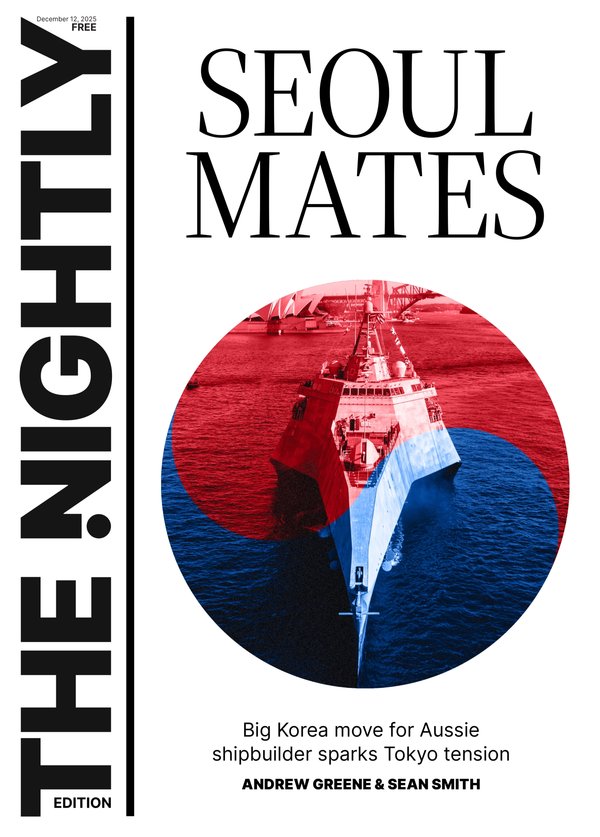JACKSON HEWETT: Mother of all Black Friday sales coming as cheap rejects flood our shores in tariff fallout
Australian retailers are bracing for an influx of cheap Chinese, Bangladeshi and Vietnamese imports that could threaten the viability of many in the sector.
Following the imposition of US tariffs on China of 35 per cent, economists have calculated the true tariff impact will be closer to 70 per cent, once the impact of previous tariffs is included.
Vietnam and Bangladesh, two of the largest apparel manufacturing countries will face tariffs of 46 per cent and 37 per cent respectively.
Sign up to The Nightly's newsletters.
Get the first look at the digital newspaper, curated daily stories and breaking headlines delivered to your inbox.
By continuing you agree to our Terms and Privacy Policy.That significant impost will now be borne by a combination of the US consumer, the retailer, the wholesaler and the manufacturer but overall prices will still be substantially higher.
The US imported around $US440 billion ($705b) of goods from China in 2024, according to US Census data, meaning a meaningful proportion of that demand will need to find alternative buyers.
Online purchases from retailers in China and Hong Kong were originally spared from tariffs under a “Di Minimis” rule that exempted products less than $US800 due to end on May 2 under the Trump administration’s tariff plan.
The redirection will be felt in Australia, and has the potential to severely crunch the margins of a retail sector that saw a 24 per cent rise in insolvencies last year. That includes famous high street names such as Jeans West, Rivers, Noni B and Katies. Across those chains alone, 3100 workers across 740 stores have been affected.
The potential for further high street collapses could have a ripple effect through the commercial real estate sector.
Australia imported $7.852b worth of apparel from July 2024 to January 2025, according to the Australian Bureau of Statistics, however demand has been weak while consumers have felt the pressure of the cost of living.
Poor consumer sentiment saw major retailer Myer announce a profit slump just this month, after it revealed discounting programs had hurt revenue.
But Myer and others will now be contending with new competitors while dealing with widespread uncertainty in terms of rapidly shifting supply chains.
While they will benefit from potentially cheaper imports from manufacturing centres such as Vietnam, China and Bangladesh they will have to face global competitors desperate to diversify their markets away from the United States.
High-income countries like Australia will be an attractive destination for sellers looking for new sales channels, with online sellers like China’s Shein and Temu expected to increase their presence, and potentially undercut bricks and mortar retail.
Online retail is the fastest growing sector of the retail market, according to the Australia Bureau of Statistics, up 14 per cent for the year to record $3.2b in sales in the month of February. By contrast total retail turnover is up just 3.6 per cent for the year. While online retail is still small compared to international peers, it sits at 11 per cent of total retail sales.
According to a survey by investment bank Jarden, in partnership with logistics firm Shippit, 86 per cent of consumers had shopped online in the past 12 months with the shift to online happening across all ages, but primarily led by younger shoppers.
According to the survey 95 per cent of shoppers rated price as the most important metric for shopping online, while 50 per cent cited “actively seeking discounts” as their primary change in behaviour in that time.
The simple approach of growing a US market by buying from China, putting it on Shopify and other marketplaces, and paying for some Instagram ads . . . That model is gone.
That leaves Australian retailers, brick and mortar especially, exposed to steep discounting from online players.
“You’ll see a lot more aggression from international players now looking beyond the US for growth. It’s good for consumers, but it’s incredibly tough for domestic retailers who are already struggling, and you’re seeing insolvencies at like all-time highs,” Shippit co-chief executive Rob Hango-Zada said.
Mr Hango-Zada said that retailers would need to think beyond commodity products to ensure they are providing a better customer experience.
“I think any retailer who has some type of innovative edge is going to fend this off. But if you’re just selling a commodity, invest in the customer experience, or you’re going to go the way of a Rivers or a Jeans West,” he said.
The Australian Retailers Association said the industry was still working through the impact of tariffs, and said it was too soon to predict the flow-on effect.
“These challenges not only impact retailers, and all in the supply chain but ultimately cause issues for Australian consumers. It’s important to keep supply chain resilience high on the agenda with our political leaders — getting in front of the challenges so we are not simply reactive to issues,” ARA chief industry affairs spokesperson Fleur Brown said.
“We are focused on policy settings that support retailers as we navigate these trade dynamics.”
Markets have moved more quickly. In a day where $57b was wiped off the local share market, Australian retailers were among those heavily sold, including Myer down five per cent, and Kmart and Bunnings owner Wesfarmers down three per cent.
It’s not just high street brands who will have to adapt their playbooks. Australian brands who have been highly successful selling into other countries with products manufactured elsewhere will also be badly hit.
Brands like Babyboo, which is estimated to be making more than $100 million in US sales, and Maison de Sabre with tens of millions of sales now face the prospect of products being up to 70 per cent more expensive. Even if they shipped to the United States, US customs is able to identify the origin of a manufactured good, forcing it to bear that country’s tariff.
Australian-based influencers, who have parlayed social media presence into a retail side hustle are now facing a very different operating environment.
“The simple approach of growing a US market by buying from China, putting it on Shopify and other marketplaces, and paying for some Instagram ads . . . That model is gone,” Mr Hango-Zada said.

